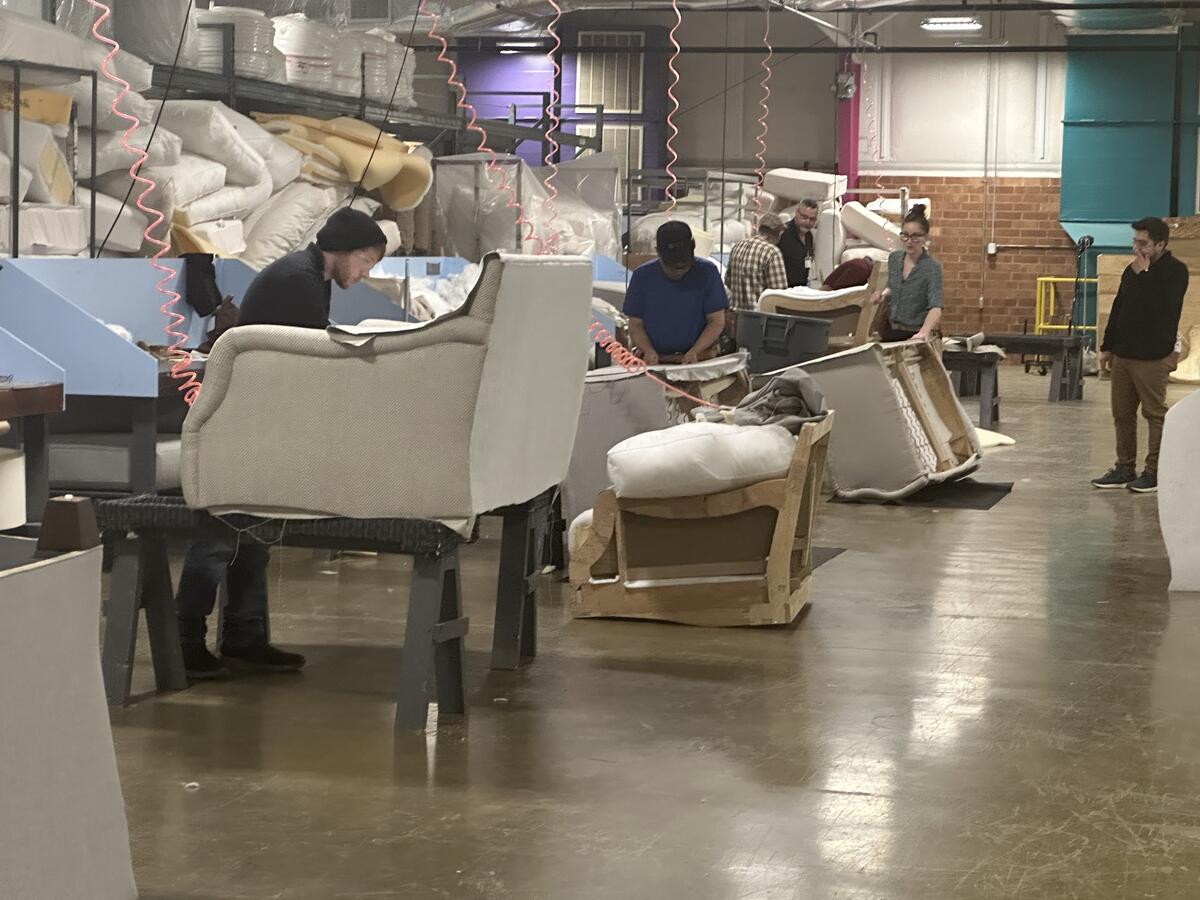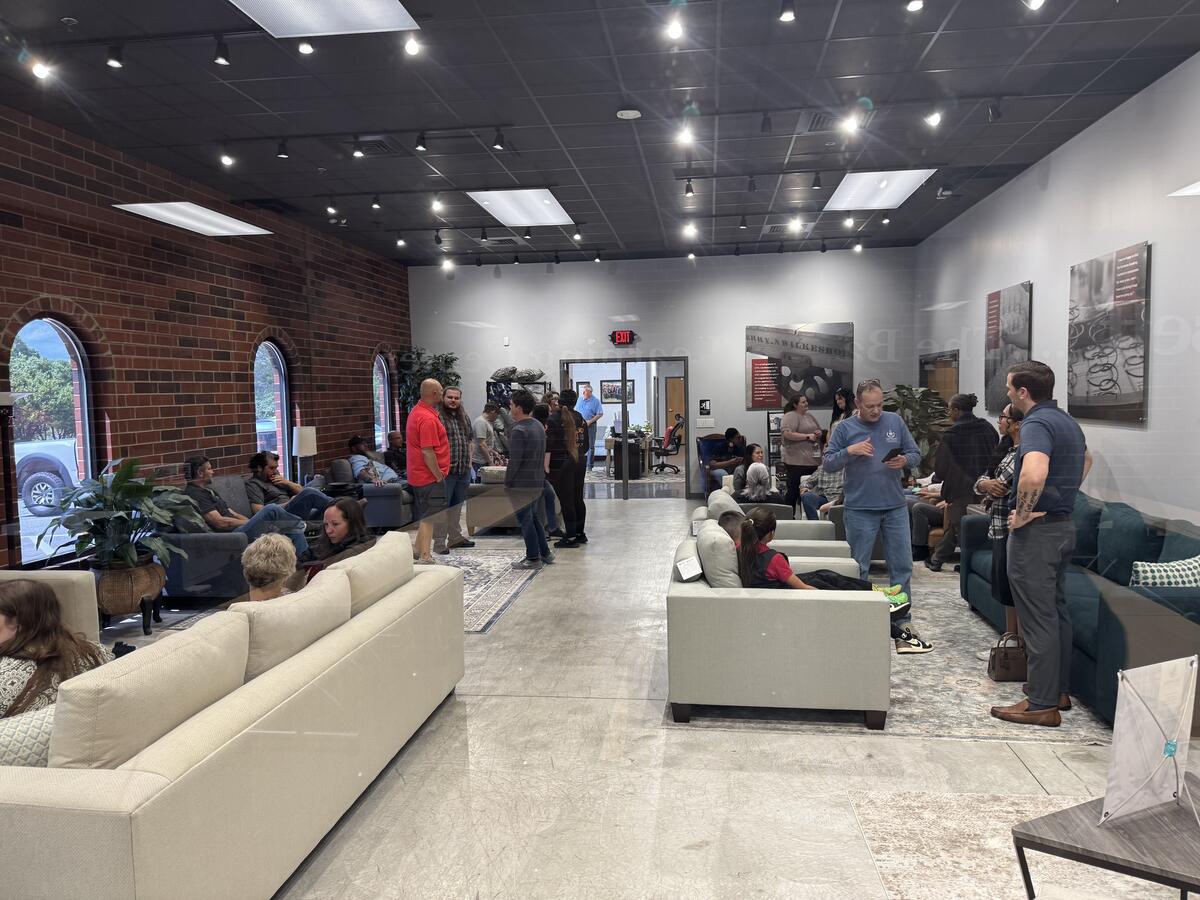For years now, reports have been steadily tracking the skilled labor shortage in the U.S. As baby boomers age out of the workforce, there’s a surplus of unfilled jobs in fields like plumbing, electrical work and manufacturing. In April, it was estimated that 313,000 manufacturing jobs in the country’s durable goods sector (which includes the furniture industry) were open.
Glimmers of hope have begun to emerge as statistics show that many Gen Z adults are eschewing mainstream colleges in favor of art schools or trade schools, at a higher rate than their millennial counterparts did. With the rapid adoption of AI creeping into professions with high levels of education—like law and medicine, once traditionally thought of as safe bets for young adults—pursuing a more hands-on career, it seems, is increasingly appealing.
The trend is impacting the furniture industry as well. The Furniture Academy at Catawba Valley Community College in Hickory, North Carolina, is among the trade schools that have seen an increase in enrollment over the past few years, so much so that the program expanded from offering one session a year to two.
Founded in 2014, the Catawba Valley Furniture Academy (which has a second location in nearby Taylorsville) was developed by the college in tandem with leaders from the region’s furniture manufacturers, who found that they needed a pipeline of trained upholstery professionals in particular. Bill McBrayer, who recently retired from Lexington Home Brands after 30 years in the human resources department, was involved in the early discussions that resulted in the program’s development and has been an adviser ever since. “This region is known as the furniture capital of America, but in the 1990s and 2000s, when case goods manufacturing started moving overseas, a lot of the population here lost faith in the furniture industry as a stable career and stopped pursuing those jobs at the rate they had been,” says McBrayer. “Upholstered furniture never left this region. We wanted to show that there are great opportunities for a lifelong career if you develop these skills.”

John Bray, the now former CEO of Hickory-based Vanguard Furniture, was also a part of those early conversations. “Coming out of the recession in 2008, across the industry, we’d all lost employees and lost business,” he says. “I went to [CVCC president] Dr. Garrett Hinshaw and I said, ‘We’re going to be in trouble, because when business picks up—and it will pick up—we need to be steadily recruiting workers.’” Bray, together with McBrayer and representatives from other regional companies like Bassett, Lee Industries, Century and Craftmaster, worked with the college to develop a curriculum, applied for state grants to fund their efforts, and ultimately bought a 40,000-square-foot building that they turned into a small furniture factory equipped with donated machinery and supplies from the involved companies.
The result is a six-month program that teaches a range of skills, including the fundamentals of furniture making; manual and automated cutting; sewing and pattern making; and inside, outside and spring up upholstery. Students finish the program with 300 hours of hands-on training, and the employment rate of alumni is nearly 100 percent thanks to the school’s partnership with regional manufacturers that hire directly from among the graduates. “Since 2014, everybody that’s completed one of our courses successfully has gotten a job offer,” says R. Gary Muller, executive dean of economic development and corporate education at CVCC. In the 11 years since the program began, more than 800 students have completed it—a mix of recent high school graduates and older students, often those who have worked in a different department at a furniture manufacturer, like shipping or receiving, and are looking to make a career change. The program currently runs at night to accommodate those who are employed, and runs two sessions: one starting in January and one starting in July.
“The good news is we’re graduating that many people,” says Bray. “The bad news is we need 1,000 to 1,200 new employees a year [across the region], so there’s still a huge worker demand.”

While furniture factories offer their own training courses, they typically do so in only the new hire’s specific area of focus. Someone taking a job in the sewing department, for example, might get a few weeks of on-the-job training in that skill before being put on the line. The training that the Furniture Academy provides is more holistic, offering the students a chance to learn about the entire upholstery process before choosing a specialty. The instructors are pulled directly from the corporate sponsors’ factories, allowing the students to learn from the very people they could be working under in the future, and see firsthand what a career in the field looks like.
Because the students are making actual furniture, the college opened a showroom on the Hickory campus to sell their work, with the profits from the sales going back to support the program. The state government also became a client, commissioning the students to build 50 loveseats for the capital building for a price of $250 each back in 2017. Between the profits from the furniture sales, state grants and corporate sponsorships, virtually everyone who attends the program does so on a full scholarship. “We don’t want anybody to be held back or not take the course because they don’t have the funding,” says Muller.
Bray feels that the program is a matter of survival for companies like Vanguard. “We’re trying to grow, and that means we need a pipeline of additional people,” he says. “We’re fighting a battle of retirement, with our average worker generally in their 50s. It’s tough to fill the volume of openings we have each year.” He emphasizes that the ample prospects for young people interested in the furniture industry are a good thing. “I got into this business in the late ’60s, and there was a wave of retirement on the manufacturing side happening at that time too. I saw so much opportunity then, and I see that repeating itself now. Not that many young people have gotten into business in the last 15 or 20 years, and it’s a wonderful industry. If you’re interested in learning these skills and finding a lifelong career, the time is right. We’re ready to teach you.”


















.png?1758305582)










